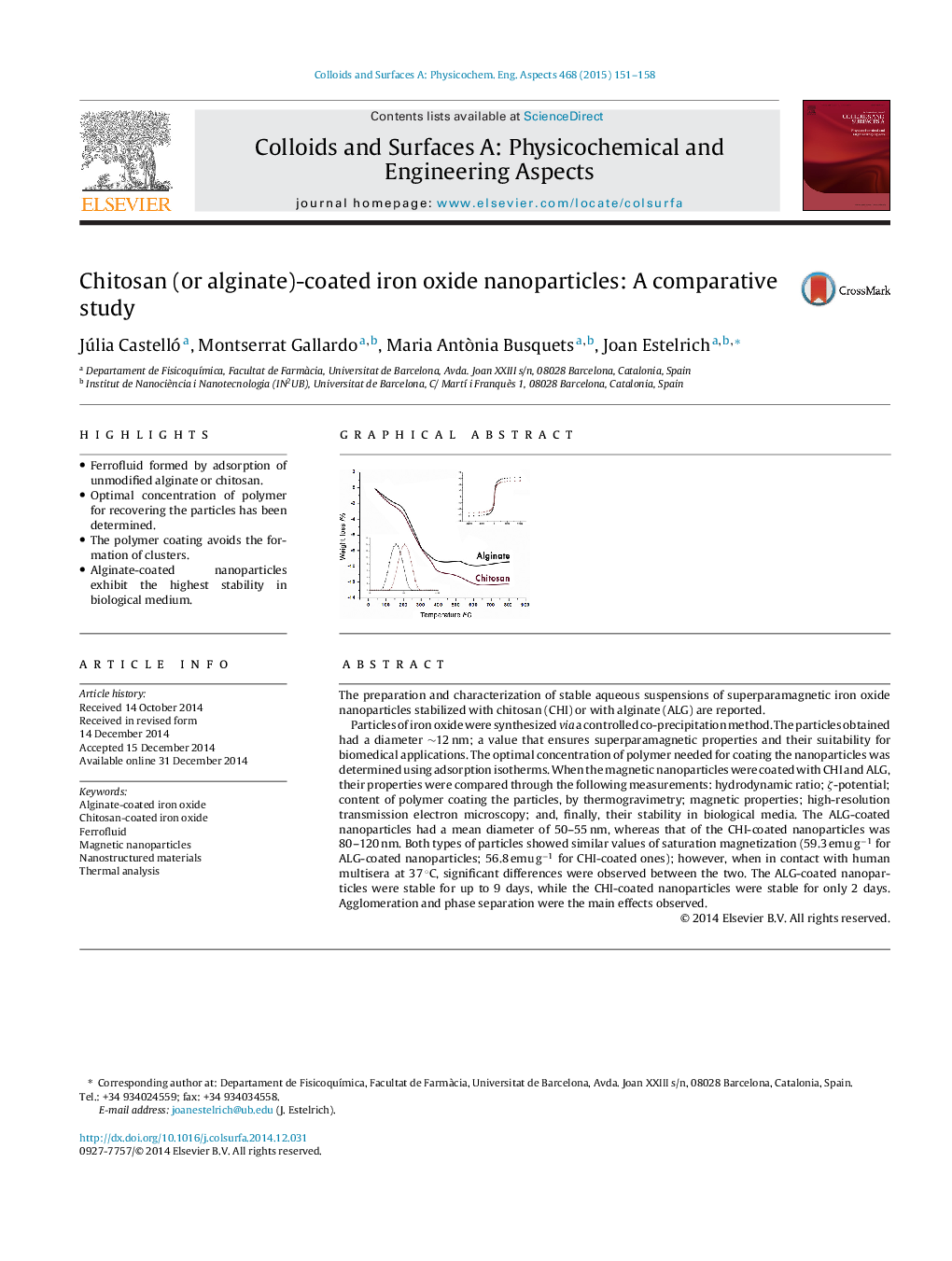| کد مقاله | کد نشریه | سال انتشار | مقاله انگلیسی | نسخه تمام متن |
|---|---|---|---|---|
| 592479 | 1453905 | 2015 | 8 صفحه PDF | دانلود رایگان |
• Ferrofluid formed by adsorption of unmodified alginate or chitosan.
• Optimal concentration of polymer for recovering the particles has been determined.
• The polymer coating avoids the formation of clusters.
• Alginate-coated nanoparticles exhibit the highest stability in biological medium.
The preparation and characterization of stable aqueous suspensions of superparamagnetic iron oxide nanoparticles stabilized with chitosan (CHI) or with alginate (ALG) are reported.Particles of iron oxide were synthesized via a controlled co-precipitation method. The particles obtained had a diameter ∼12 nm; a value that ensures superparamagnetic properties and their suitability for biomedical applications. The optimal concentration of polymer needed for coating the nanoparticles was determined using adsorption isotherms. When the magnetic nanoparticles were coated with CHI and ALG, their properties were compared through the following measurements: hydrodynamic ratio; ζ-potential; content of polymer coating the particles, by thermogravimetry; magnetic properties; high-resolution transmission electron microscopy; and, finally, their stability in biological media. The ALG-coated nanoparticles had a mean diameter of 50–55 nm, whereas that of the CHI-coated nanoparticles was 80–120 nm. Both types of particles showed similar values of saturation magnetization (59.3 emu g−1 for ALG-coated nanoparticles; 56.8 emu g−1 for CHI-coated ones); however, when in contact with human multisera at 37 °C, significant differences were observed between the two. The ALG-coated nanoparticles were stable for up to 9 days, while the CHI-coated nanoparticles were stable for only 2 days. Agglomeration and phase separation were the main effects observed.
Figure optionsDownload as PowerPoint slide
Journal: Colloids and Surfaces A: Physicochemical and Engineering Aspects - Volume 468, 5 March 2015, Pages 151–158
